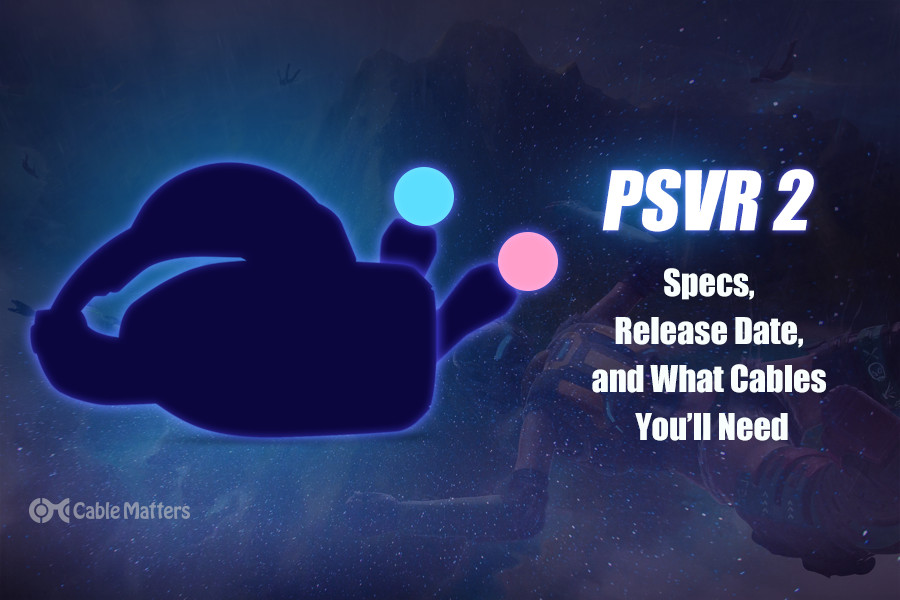
The Sony PlayStation VR2 isn’t just a huge upgrade on the original PlayStation VR, it’s the absolute flagship virtual reality gaming experience you can have on consoles. With no sign of competition from Microsoft on the Xbox, if you’re a console gamer and want to enjoy VR, then your only option for a cutting-edge experience is with a PlayStation 5 and the upcoming PSVR2.
The new PlayStation VR 2 isn’t just a hardware upgrade – although the headset is getting a huge overhaul for modern technologies – but it’s also got new motion controllers, vastly improved tracking, and a newly announced game designed with the next-gen console VR gaming experience in mind.
The PSVR2 headset upgrade
The virtual reality headset is, for now at least, the heart of any VR experience, and the PSVR2 is no different. The new headset takes a major leap in visual fidelity over its predecessor, upgrading to a single OLED display with a resolution of 2,000 x 2,040 pixels per eye, for a true-4K VR gaming experience. It will also offer refresh rates as high as 90 or 120Hz, making for a smoother and more comfortable gaming experience.
As well as the new screen, the PlayStation VR2 also comes with new lenses, enabling a wider 110-degree field of view, for a more immersive gaming experience.
Hidden inside the headset itself, Sony has incorporated a number of other exciting features. That includes eye tracking, enabling foveated rendering or increased performance, better in-game focus tracking, and adding additional inputs for the player and heightened emotional interaction among players. It also has haptic feedback, letting you feel the rumble of your game’s actions, and provide intuitive feedback for everything the player does, as well as 3D audio support for more immersive in-game sound.
PSVR2 cables
The PSVR2 will use a high-quality USB-C cable to connect with the PS5, much like the Oculus Quest and Quest 2 – though Sony doesn’t appear set to encourage you to buy an overpriced bespoke version. Instead, you should be able to use any high-quality USB-C cable.
The maximum length has still yet to be revealed, but USB-C can be quite long before it runs into attenuation issues.
An improvement over the original PSVR is that it doesn’t seem like there will be any kind of breakout box this time, so you’ll just be able to plug the USB-C cable into the PSVR2 and the other end into the PS5.
Sony hasn’t revealed just yet how it will handle audio, but so far it appears as if it’ll be encouraging the use of third-party headphones connected over a 3.5mm cable. Everything’s still a little nebulous on that front, though, so when we get some pictures of the new headset we may get a better idea of what will be possible on the audio front.
Inside-out tracking
Taking the cue from a number of other major headset developments, the PS VR2 will ditch the external tracking camera of the PSVR and will instead leverage inside-out tracking using depth-sensing cameras built into the headset itself. There will be four in total, providing tracking of both the headset position in its physical space, and the motion controllers (more details on those below).
An onboard three-axis gyroscope and three-axis accelerometer will provide headset orientation data to the console, with the infrared cameras providing proximity and positional data. Together, they should provide solid tracking in a 360 degree space. That’s a vast improvement over the PSVR’s 180-degree, single-camera tracking solution. Although there is something to be said for comprehensive external sensors like Valve’s Lighthouse sensors being more effective, inside-out tracking makes setup and tear down far easier, making for a much better user experience.
New controllers
The one aspect of the original PSVR which felt dated even when it first launched, was the use of the Move Motion controllers. Those PS3 holdouts were much-more akin to Wii motion controllers than the more advanced wands of the HTC Vive, or the improved Oculus Touch controllers which debuted alongside other first-generation mainstream headsets. Since then we’ve seen vast improvements from the likes of Valve and Oculus, leading to much better gesture and finger tracking capabilities, and the PS VR2 will follow suit
They’ll have their own in-built gyroscope and accelerometer sensors, with positional data captured by the headset’s cameras. They’ll include a number of standard PlayStation and PSVR controller inputs, and will have a single USB-C port for charging.
A new game for a new generation
Alongside detailing the new headset, Sony also announced a single next-generation game for PSVR2. Horizon: Call of the Mountain, based on the Horizon: Zero Dawn universe, looks absolutely stunning in its debut trailer, and offers heaps of promise – especially since the original PS4 game already looks great with its unofficial PC VR mod.
No other games have been announced for the PSVR2 just yet, but it should be backward compatible with most PSVR games, and there will likely be a number of other major announcements leading up to a potential release date.
PSVR2 release date
No official release date has been announced by Sony - not even a hint at a prospective launch window, though it will most likely not launch within the first half of 2022.